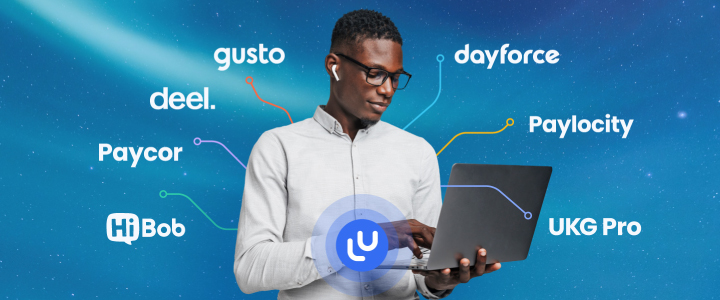
5 min reading time
SaaS LMS: Everything You Need to Know
The learning and development industry has adapted to rapid change. That’s down to the resilience of learning leaders, their passion for training, and the range of online tools and systems that enable them to execute their strategies. Thanks to its versatility and flexibility, one L&D tool that stands out from the rest, is the learning management system, or LMS.
An LMS enables you to create, manage, deliver, and measure learning all in one centralized system. We’re going to take a look at the two most common types of learning management systems; SaaS LMS and self-hosted LMS.
What is a SaaS LMS?
Firstly, SaaS, also known as software as a service, simply means a cloud-based subscription model to a system or platform that’s hosted online, and not downloaded onto a single device.
With a SaaS LMS, you pay a subscription in order to gain access to the learning management software. Usually, software as a service allows you to scale your ‘plan’ or subscription level to meet your business’s needs rather than paying for a license that may be more rigid. The SaaS LMS providers pricing model is typically based on actual usage of the product or service so, it’s considered to be a more scalable investment.
This type of learning solution doesn’t require you to install specific hardware or software to access and use it. You simply log into a web portal and have access to the features and courses. This is a popular LMS option because it’s an easy to implement, low maintenance, secure and configurable solution.
SaaS vs self-hosted LMSs
A self-hosted LMS is installed locally on your company’s servers. Some self-hosted LMSs can have more customization options, but your company’s IT department will need to install updates and maintain the LMS.
But is a SaaS LMS better for your organization than a self-hosted LMS? The answer is entirely dependent on your needs and resources as a business. As with anything, there are pros and cons to both.
With a SaaS LMS, most of the technical work is done by the LMS provider. You won’t need to worry about installing hardware and allocating resources to manage it. For managers and learners, it’s as simple as logging in and getting started. You should also have an LMS provider that has round the clock support, so any technical issues can be resolved quickly and easily.
However, a self-hosted platform only works if your organization follows the same architecture across all platforms. It also leaves you and your team handling applications, like servers, databases, resources, and budgeting. Unlike a cloud-based LMS, updates are not automatically applied to the LMS. Any improvements and updates need to be applied by your IT team across each device. These updates can be crucial to your training success, meaning a lack of resources or leadership buy-in to L&D can be critical.
In short, if your company needs an LMS that grows with you, SaaS is a smart choice. These platforms are flexible and can adapt to you growing from 1,000 to 10,000+ users easily. While self-hosted platforms can be expanded, it’s up to your internal team to manage activity and storage as user numbers grow.
Benefits of a SaaS LMS
A SaaS LMS clearly has an advantage over a self-hosted LMS. But why is that exactly? You already know that it’s a more flexible and scalable option, so let’s discover more advantages.
Cloud-based
A SaaS LMS is cloud-based, meaning your learners access training anywhere, at any time. Whether they prefer to learn on a laptop, desktop or smartphone, a cloud-based LMS is a convenient and simple way to learn as it can be accessed on any device type. All that’s needed is an internet connection and away they go!
Quick to launch
Most cloud-based LMSs will have a straightforward implementation process, with a dedicated Support and Success team to help you through the process. Once you know the goal of your training, you can start adding your courses, enrolling learners and getting your training programs launched.
Remember when comparing LMS vendors, it’s a good idea to ask questions about their average implementation timelines. That way, you’ll have a clear expectation of how prepared they are to help you meet your important learning deadlines.
Easy upgrades and updates
Easy and constant data updates are a major reason cloud-based SaaS LMSs are popular. As maintenance is taken care of by the vendor, you don’t need to worry about system issues or downtime.
New or updated features are instantly applied to your learning system, meaning you can focus on building successful training programs that get results.
Modern features
Any SaaS LMS worth its salt should come with features that are easily configurable and user-friendly. From mandatory, to self-directed learning, an LMS interface should be configured so it’s as simple or sophisticated as your organization needs.
Your learners should be able to easily launch and complete training. Features like portals enable you to create and manage unique training environments that cater to specific training needs and learner groups. Ease of use isn’t just for the learners, a great SaaS LMS will reduce the admin workload through features like automation and reports.
Seamless integrations
Many SaaS LMSs integrate with third-party systems using APIs, or tools like Zapier, making connecting your training to systems, like HRMs, webinar tools or Salesforce, seamless. Once you’re connected to a tool, the manual admin tasks associated with managing your training programs will noticeably decrease.
Using integrations to automate actions like user creation and access, data synchronization and enrollments, leaves you with more time to spend on delivering effective training.
Scalable pricing
If you’re investing in your future L&D strategy, you’ll need a solution that scales with your business as you grow. A cloud-based SaaS LMS will usually be more cost-effective than a locally installed LMS. Due to standard pricing practices, you won’t need to pay a large amount upfront. The cost is based on your usage metrics, such as users or portals, so you only pay for actual usage of your cloud LMS.
This means that cloud-based LMS solutions are typically more cost-effective in the short-term. You also don’t have to pay for maintenance, upkeep, and support, making it an effective long-term solution too.
Security & backups
Many SaaS LMSs will have security features that protect the cloud-based platform along with the data you keep stored on it. It’s crucial that a SaaS LMS provider meets the industry standards for cloud security and data privacy. Some third-party certifications include; Service Organization Control (SOC) 2 certification, the EU’s General Data Protection Regulation (GDPR) compliance, or IS0 27001 with Certification Europe.
When it comes to training, there’s no right or wrong LMS provider option. While SaaS LMSs are the most popular choice, it’s ultimately down to your business’s training needs. For more information on cloud-based learning management systems, read the LMS Buyers Guide.




